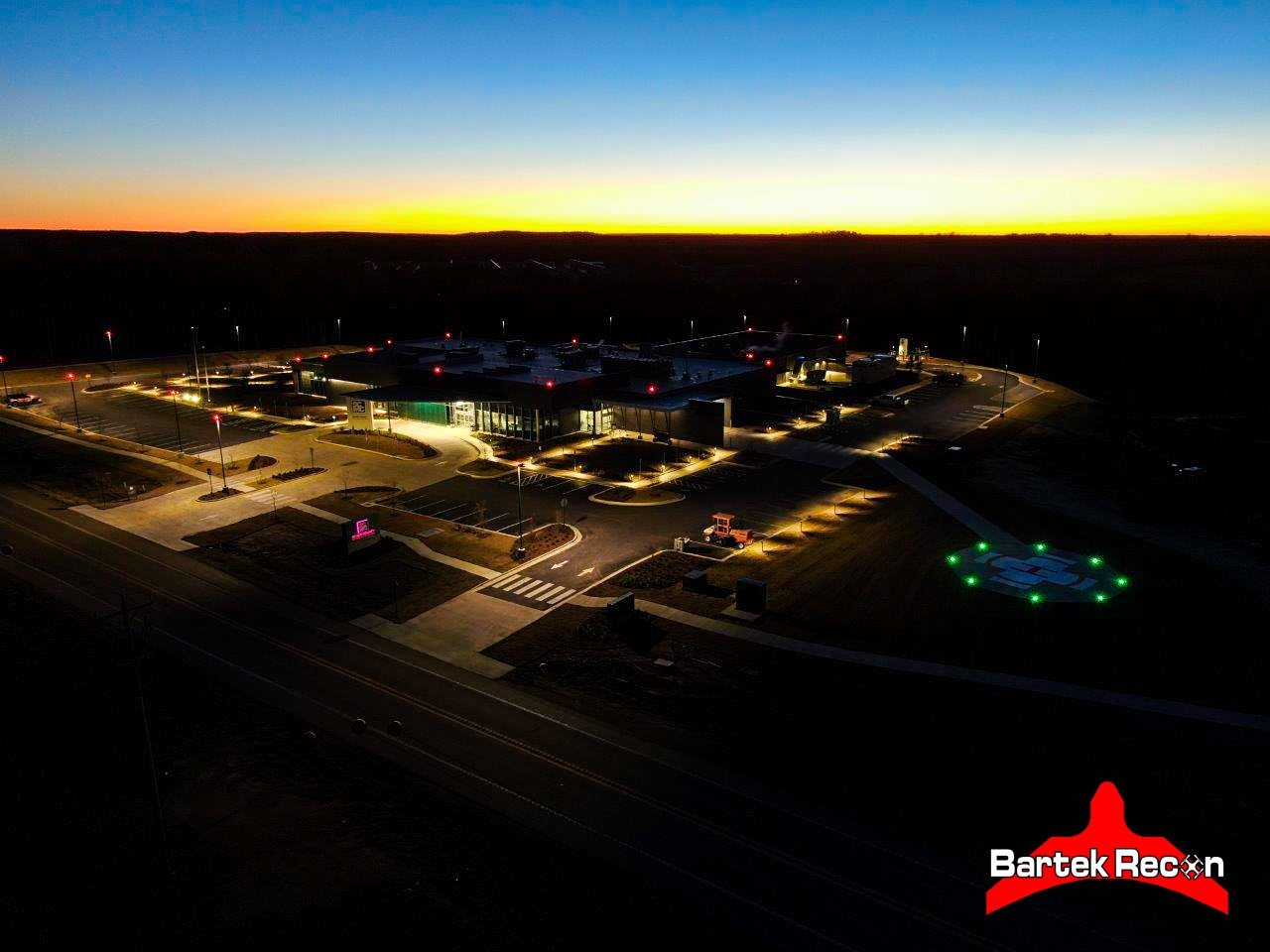LITTLE ROCK – Arkansas Attorney General Leslie Rutledge today hosted the 2022 Law Enforcement Officer of the Year awards and recognition luncheon at the Benton Event Center. There she announced Fort Smith Police Officer Robin Gaines and Hot Springs Police Officers Stephen Parrott and James Moore as the 2022 Law Enforcement Officers of the Year. Officer Gaines intervened in a domestic violence dispute, where he was seriously injured, which was pivotal to ending the tragic crime. Officer Parrott and Officer Moore were recognized for stopping a shooting after a high school graduation ceremony outside the Hot Springs Convention Center, ultimately saving countless lives.
“Officer Gaines, Officer Parrott, and Officer Moore’s quick reaction and bravery halted extremely dangerous situations that easily could have turned into further tragedies,” said Attorney General Rutledge. “Each of these winners sacrifice so much to protect our communities. I cannot thank our law enforcement officials and their families enough for all they do on a daily basis.”
On October 17, 2021, Officer Gaines was dispatched to a disturbance with weapons call. When Officer Gaines arrived, he found Christofer Conner violently assaulting his fifteen-year-old son with a brick. Officer Gaines confronted Conner and ordered him to drop the brick and get on the ground. Conner began to walk toward a residence instead of following the commands, so Officer Gaines placed himself between Conner and the house. Conner initially complied, but suddenly lunged at Officer Gaines and stabbed him in the neck with a large knife.
During the extremely violent attack, Officer Gaines was forced to fire his duty weapon to defend himself which ultimately ended the attack. Critically wounded, Officer Gaines was rushed to the hospital where he underwent emergency surgery. Officer Gaines continues to recover from injuries he sustained that morning. The fifteen-year-old boy did not survive. Further investigation into the incident revealed that Conner had killed his girlfriend inside the residence he was walking towards when Officer Gaines intervened. A young juvenile was located inside the residence relatively unharmed.
Fort Smith Police Chief Baker states, “Officer Gaines acted with heroism and bravery in the line of duty when confronted with extreme danger to his own life by a subject on a murderous rampage. His exemplary actions truly displayed the Guardian mindset all members of the Fort Smith Police Department strive to have.”
On May 12th, 2022 a large fight broke out across from the Hot Springs Convention Center following a high school graduation ceremony. Officer Stephen Parrott and Officer James Moore, among others, were dispatched to the scene.
As officers were physically breaking up and attempting to disperse the crowd, one suspect drew a handgun and fired into the mass of people striking and ultimately killing one man. Officers Parrott and Moore were both nearby and immediately took action by drawing their weapons and firing upon the suspect, striking him multiple times, causing him to cease shooting and flee on foot from the scene. The officers then chased the suspect through the crowd to a vehicle parked some distance away, later seeking medical treatment from a local hospital, leading to his apprehension.
As Hot Springs Assistant Chief Hrvatin states, “The heroic actions carried out by Officer Parrott and Officer Moore on that night potentially saved countless other victims from injury or death. Not only did they make the difficult decision to use deadly force, they did so without hesitation and without any due regard to their own safety.”
During the event, Rutledge also awarded the Dwayne Yarbrough Distinguished Service Award to Sergeant George Edelen of the Van Buren Police Department. The award honors the legacy of distinguished public servant, Dwayne “Big D” Yarbrough, for his contributions to youth education and involvement initiatives. Over the last six years, Sergeant Edelen has served as a school resource officer at Butterfield Trail Middle School. During that time, Sergeant Edelen has created various programs to bridge the divide between students and law enforcement. Sergeant Edelen began the ENAF—Everyone Needs A Friend program in response to the rise in youth suicide and accidental overdoses. The program provides all students with an opportunity to meet one-on-one with Sergeant Edelen to learn life skills, inspire volunteerism and help students realize their own potential.
Van Buren Police Chief Jamie Hammond remarked, “We do not get many chances to make positive impressions on our youth, so we are lucky to have had people like ‘Big D’ make those positive impacts, and now Sergeant Edelen to carry on Big D’s legacy.”
Rutledge also presented Valor Tributes, which are given in honor of members of the law enforcement community who tragically lost their lives while in the line of duty as well as COVID-19. This year’s tributes were presented to Officer Gary Bean, Sergeant Joshua Caudell, Officer Vincent Parks, Senior Corporal Michael Springer, Sergeant William Shibley and Officer Jeremiah Story.
2022 Officer of the Year Winners
Arkansas County
Trooper Martino Green, Arkansas State Police
Ashley County
Trooper Charles (Ross) Allen, Arkansas State Police
Baxter County
Corporal Britt Clements, Arkansas State Police
Benton County
Trooper Zenda Staab, Arkansas State Police
Boone County
Corporal Wade Grayson and Officer Brandon Motley, Arkansas Game and Fish Commission
Bradley County
Corporal Byron Curry, Arkansas State Police
Calhoun County
Trooper Justin Harper, Arkansas State Police
Carroll County
Officer Pauline Knott, Berryville Police Department
Chicot County
Trooper Christian Morphis, Arkansas State Police
Clark County
Chief Aaron Collier, Caddo Valley Police Department
Clay County
Corporal Michael Tompkins, Arkansas State Police
Cleburne County
Deputy Nathan McClain and Sergeant Chris Gracey, Cleburne County Sheriff’s Office
Cleveland County
Corporal Greg Rowland, Arkansas State Police
Columbia County
Agent George Barnes, Arkansas Department of Community Corrections
Conway County
Trooper First Class Deston Linkous, Arkansas State Police
Craighead County
Corporal Anthony Maggitt, Arkansas State Police
Crawford County
Wildlife Officer Kurt VanMatre, Arkansas Game and Fish Commission
Crittenden County
Trooper Spencer Morris, Arkansas State Police
Cross County
Trooper Tanner Hess, Arkansas State Police
Dallas County
Trooper Jimmy Plyler Jr., Arkansas State Police
Desha County
Senior Corporal Mitch Grant, Arkansas State Police
Drew County
Trooper Tyler Grant, Arkansas State Police
Faulkner County
Trooper Ronnie Grace, Arkansas State Police
Franklin County
Trooper James Ray, Arkansas State Police
Fulton County
Trooper Jason Long, Arkansas State Police
Garland County
Officers James Moore and Stephen Parrott, Hot Springs Police Department
Greene County
Corporal Todd Harris, Arkansas State Police
Hempstead County
Corporal Justin Dean, Hope Police Department
Hot Spring County
Corporal William Whisenhunt, Arkansas Department of Corrections
Howard County
Officer Ashanti Burris, Arkansas Department of Community Corrections
Independence County (TIE)
Agent Melissa Stephens, Arkansas Department of Community Corrections
Corporal Brandon Trewyn, Arkansas State Police
Izard County
Corporal Ryan Warner, Arkansas Game and Fish Commission
Jackson County
Corporal Dustin Smith, Arkansas Game and Fish Commission
Jefferson County
Sergeant Tasha Clark, Arkansas Department of Corrections
Johnson County
Wildlife Officer Kirk Turner, Arkansas Game and Fish Commission
Lafayette County
Trooper Jordan Drake, Arkansas State Police
Lawrence County
Trooper Brady Bates, Arkansas State Police
Lee County
Trooper Tate Ledbetter, Arkansas State Police
Lincoln County
Sergeant Freddie Childs, Arkansas Department of Corrections
Little River County
Trooper First Class Joshua Broughton and Trooper Ian Nelson, Arkansas State Police
Logan County
Corporal Jed Bolyard, Arkansas State Police
Lonoke County
Corporal Jason Dooley, Arkansas State Police
Madison County
Corporal Jana Cordes, Arkansas State Police
Marion County
Trooper Matt Sanford, Arkansas State Police
Miller County (TIE)
Sergeant Kyle Caudle, Texarkana Police Department
Corporal Jay Thomas, Arkansas Game and Fish Commission
Mississippi County
Officer Michael Dannar, Blytheville Police Department
Monroe County
Corporal Damon Dobson, Arkansas State Police
Montgomery County
Trooper First Class Michael Summitt, Arkansas State Police
Nevada County
Trooper Robert Neese, Arkansas State Police
Newton County
Agent Jeffery Baumgardner, Arkansas Department of Community Corrections
Ouachita County
The late Deputy Parker Cox, Ouachita County Sheriff’s Office
Perry County
Deputy Terry Payne, Perry County Sheriff’s Office
Phillips County
Trooper Dairren Evans, Arkansas State Police
Pike County
Trooper Seth Smedley, Arkansas State Police
Poinsett County
Sheriff Kevin Molder, Poinsett County Sheriff’s Office
Polk County
Corporal Bo Hayes, Arkansas State Police
Pope County
Sergeant David Bevis, Russellville Police Department
Prairie County
Corporal Scott Troy, Arkansas State Police
Pulaski County
Detective Roy Williams, Little Rock Police Department
Randolph County
Officer Terry Tribble, Pocahontas Police Department
St. Francis County
Corporal Jason Martin, Trooper Heath Gurley, Detective Eric Varner, Arkansas State Police
Saline County
Chief Carl Minden, Bryant Police Department
Scott County
Special Agent Corey Mendenhall, Arkansas State Police
Searcy County
Corporal Buster Rinks, Arkansas State Police
Sebastian County
Officer Robin Gaines, Fort Smith Police Department
Sevier County (TIE)
Corporal Ernesto Echevarria, Arkansas State Police
Wildlife Officer Tyler Hill, Arkansas Game and Fish Commission
Sharp County
Chief Shane Russell, Highland Police Department
Stone County
Agent Kenny Kendrick, Arkansas Department of Community Corrections
Union County
Trooper Trevoris Tatum, Arkansas State Police
Van Buren County
Officer Timothy Baker, Clinton Police Department
Washington County
Captain Jeff Taylor, Springdale Police Department
White County
Corporal Mike McNeill, Arkansas State Police
Woodruff County
Chief Deputy James Dunham, Woodruff County Sheriff’s Office
Yell County
Trooper First Class Brandon Bird, Arkansas State Police



























